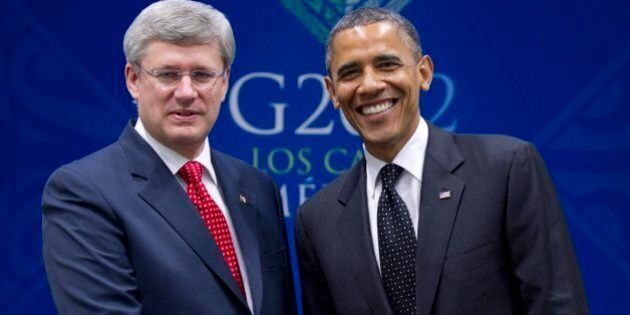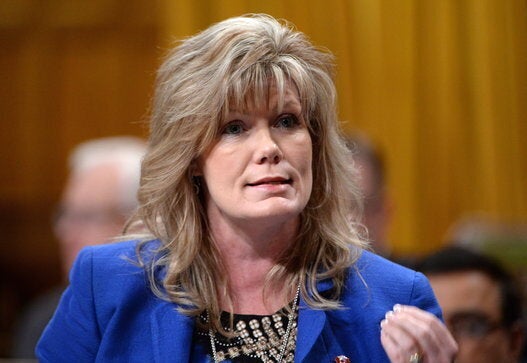
Attention in Canada is finally starting to shift toward the Trans-Pacific Partnership (TPP) and two things are starting to become apparent.
The first is that no one in Canada seems to know what the agreement is. As iPolitics has noted, Canadians seem unsure" if the TPP is a trade agreement, rock band or new brand of toilet paper." Recent polling in Canada by Angus Reid substantiates this point about the general confusion if not the particulars. So, obviously a lot of basic work still has to be done on the public education front.
And it's not certain that this work will get done. The federal Ministry of International Trade and the government will insist that this is being taken care of, but past experience leaves one feeling uneasy. This is a big agreement and it's going to take some explaining. The longer the government and advocates delay in doing this the harder this will be as anti-trade forces get out ahead and sow the seeds of doubt. At the end of the day if a government has a majority the agreement will pass despite public drama but there is no sense is making this harder than it hast to be.
At this stage advocacy would have to be on the theory versus the practice of the agreement. We know why the ambition and stated intent of the agreement are important, but we don't know exactly what is in it. But there is enough information thanks to leaks and government talking points to do a good initial presentation to the public.
A second conversation on exactly what is in the agreement and specific impacts would, of course, be needed once those are available. But it is probably better, and easier, to split the conversations. Hoping that the first conversation informs the second and keeps it focused.
A second debate that seems to be forming is over whether any ambitious new multi-party trade agreement or whether the coming debate on joining the TPP will be akin to that over joining the NAFTA. Both those questions are really irrelevant and non-starters.
And that's where the numbers come into play.
When Canada signed its free trade agreement with the U.S. it was about adding advantage -- special privilege and access beyond that which geography had blessed Canada -- to fattest, richest, largest and easiest market in the world. Joining NAFTA was about mitigating any downsides to having to share those advantages and that market with a single country, Mexico, that was on a meandering path to greater development. The TPP by contrast is about having to share that market with 10 other countries some of whom are fully industrialized and all of whom are arguably a heck of a lot hungrier than was Mexico back when the NAFTA was signed.
There is some debate among trade economists over how much, if at all, the TPP will impact integrated North American supply and production chains. But on the other hand, NAFTA hasn't been updated -- period -- and the TPP is essentially an attempt by the U.S. administration to get a modern updated free trade agreement with its principal trading partners around the Pacific and set the rules for trade before everyone signs agreements with China. Updating NAFTA is, of course, and has been off the table in Washington D.C. The troubles the U.S. administration is having with the TPP pales in comparison to what it would face in trying to re-open discussions over NAFTA.
In fact, critics of the U.S.-EU agreement, officially called the Trans Atlantic Trade and Investment Partnership or TTIP have instead taken to calling the agreement TAFTA, figuring the best way to gin up opposition is not just associate it, but to rhyme it with NAFTA.
So, going from North America as a table for three to a table for 12 (or 13 if one includes Korea which already has a modern 2.0 type agreement with Canada and the U.S.). This is the first number to consider.
The second set of numbers are Canada's trade with TPP countries, which account for roughly 81 per cent of Canada's total exports of goods and 65 per cent of Canada's total service exports. In western Canada the TPP countries account for 83 per cent of goods exports, while for central Canada it's about 80 per cent. (Numbers calculated from StatsCan)
If that much of Canada's foreign trade is heading off for a new club house then does Canada really have any choice but to go along?
Yes in theory, but no in reality.
The choice that Canada has is less about whether to join and more in how. Critics of the agreement will focus on job loss, or in essence, fear of new competition. Proponents will point to new markets and a booming global middle class. To some degree both are correct. But both sides have to be honest, including proponents who tend to oversell the immediate gains and downplay the pain. Pain seems more immediate, especially to the news media, and gains take longer, but in the end economies adjust and prosper.
The reality of any healthy economy is that there is creation and destruction. And in that the lessons for Canada, especially western, Pacific facing, Canada under NAFTA seem instructive. As Mexico has gotten richer and its middle class has grown we've seen a great market for wheat, pulses and canola oil. The oil service industries are finding new opportunities, joining other Canadian service stalwarts like Scotiabank. Tourism into western Canada has also done well.
So, if Mexico is "eating our lunch" then that's a good thing because another market for beans from Saskatchewan is always welcome as is a market for oil services and the equipment that goes with it, and for Winnipeg's Palliser furniture, and for banking and agricultural production services, and so on, and so on. And given how folks back east have done on the global scene with Nortel and RIM, the quiet success story of commodities -- and commodity related and other services -- is worth more attention.
Also worth attention is the decision by Australia to stop trying to keep its domestic auto industry afloat and instead focus on areas where it has competitive advantage in Asia.
Finally, any market after the U.S. is going to be harder but that's where Canada is heading and there is no going back to the good old days of having the U.S., or North American market to ourselves. The Americans and Mexicans have made the decision to open as have we. We really have no choice in opening, the choice is in how we respond. The west (with the exception of a missing pipeline or two) appears to be ready, is the rest of Canada?
MORE ON HUFFPOST:
